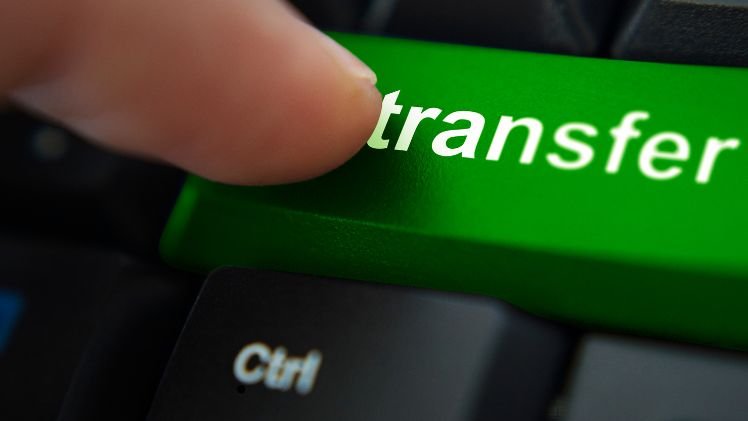How To Transfer Number Plate? Document Checklist
Thinking about transferring a private number plate to another car or keeping it for later? The good news is that it's simpler than it sounds. With the right documentation and a little know-how, you can get it done without any trouble. If you're wondering how to transfer private plate information between cars, read on. This guide walks you through the procedure and gives you a short checklist to ensure you have everything you need before you begin.
What Are the 3 Types of Private Plate Transfers?
1:Vehicle to Vehicle
If you want to transfer number plate to another car or transfer private plate to another car, the process is simple. You can do it online in a few minutes or by mail if you want. In any case, as long as you have the proper documentation and both vehicles meet the rules, it's a pretty easy job.
Required Documents:
- The V5C logbook for both cars (that's the big red and blue document with all the car's details).
- A valid MOT certificate for both vehicles (if they're over three years old).
- An £80 fee to pay for the transfer plate process.
Methods of Transfer a Number Plate:
Transfer online
If you want to transfer your private number plate to another car, you can do so online quickly and easily. Here's how to do it in two simple steps.
Step 1: Take the plate off your current car
Start by visiting the
DVLA website and going to the Take a Registration off a Vehicle page. You'll need to enter the number plate you want to remove, the reference number from your V5C logbook, and your postcode. Once you've confirmed that you are the registered keeper, you'll be required to pay an £80 fee. When that is completed, you will be given a reference number, which you should keep safe because you will need it in the next stage. If the DVLA does not need to inspect your car, the plate will be removed immediately.
Step 2: Put the plate on your new car
Now go to the Assign a Number page on the DVLA website. Enter the private plate you want to use and confirm that you are the grantee or purchaser. Then, enter the information from your V5C logbook, including the reference number you obtained in Step 1. Once completed, submit the form online. This is how you transfer private plate details and effectively transfer plates to new car. Your new car will now have your private number plate.
Transfer by post
If you don't want to do it online, you can transfer your private number plate by post. First, visit the DVLA website and download the V317 form. Follow the instructions for 'Option A' on the form. You will need information from both cars' V5C logbooks—the one you are removing the plate from and the one you are placing it on.
Next, write an £80 cheque payable to 'DVLA Swansea.' Include it with the completed V317 form and both logbooks in your envelope. The DVLA address you need is printed on the form.
If everything is filled out correctly, the DVLA will issue you new logbooks for both vehicles, which generally takes around two weeks. Just make sure that there are no errors or missing documents to avoid delays.
2: Document to Vehicle
If you already have a private number plate on paper—either on a certificate of entitlement (V750) or a retention document (V778)—you can transfer it to a vehicle that is ready for use.
Required Documents:
- V750 Certificate of Entitlement or V778 Retention Document
- V5C logbook
- Valid MOT certificate (if the car is over 3 years old)
- £80 transfer fee
Methods of Transfer a Number Plate:
Transfer online
To transfer your private number plate from a certificate to a car, make sure that your V750 or V778 certificate has not expired. These documents are normally valid for ten years, so as long as they are still in date, you are good to go.
Next, make sure that the name on the certificate matches the person listed as the registered keeper of the car. If it doesn't, the transfer will fail.
Once that's done, go to the DVLA website and go to the "Assign a private number" page. You'll be asked to enter the private number plate you want to use and confirm whether you're the grantee or purchaser. You'll also need to enter your car's current registration number, the reference number from your V5C logbook, and the postcode that matches what's on the logbook.
Finally, enter the information from your V750 or V778 certificate and submit the form. If everything checks out, the transfer should be completed without delay.
Transfer by post
If you prefer to do things the old-fashioned way, you can transfer your private number plate by post. First, make sure your V750 or V778 certificate is still valid; it should contain an expiration date. Then, make sure that the person mentioned on the certificate matches the person listed as the registered keeper on the vehicle's V5C logbook.
Next, fill in the sections of the certificate that apply to you, and remember to sign where it asks. You will also need to write an £80 cheque payable to 'DVLA Swansea.'
After that, place the completed certificate, your logbook, and the cheque in an envelope and mail it to the DVLA. You'll find the address on the certificate itself.
3: Vehicle to Document
If you want to keep your private number plate but don't have another car to place it on just yet, you can remove it from your current vehicle and save it for later. This is known as "retaining" a number plate. It means that the plate is stored on a certificate so that you can use it again or sell it if you choose.
Fill out a V317 form and return it to the DVLA together with your V5C logbook. If you only have the green 'new keeper' slip, include a filled-in V62 form too. There's an £80 fee for this.
Once accepted, the DVLA will send you a new logbook with a different number plate for your present car, and you'll also get a V778 Retention Document. That paper shows that you still own the private plate and can use it later—just don't lose it.
Required Documents:
Vehicle Requirements For Transferring A Private Plate? Explained
Before you can transfer a number plate, the car you're putting it on must meet a few basic rules. If necessary, you can
Check My Car Reg or do a quick
Number Plate Check to confirm it's properly registered with the DVLA. It must be capable of moving on its own; thus, it cannot be a written-off or scrapped car.
If the car is older than three years, it must also have a valid MOT. Even if it's a classic that is normally MOT-exempt, one will still be required for the transfer.
It must be taxed or have a Statutory Off Road Notification (SORN) in place, and this needs to have been continuous for the past five years. If it has been off the road for more than five years, it must be taxed again and have a valid MOT.
Finally, the DVLA may request to inspect the vehicle, so it should be in good enough condition for a check if necessary.
Can I transfer my number plate?
Yes, you can transfer your number plate if your car fits the DVLA's requirements. Your vehicle must be registered in the UK, capable of moving on its own, and have either current tax or a valid SORN. If it is more than three years old, it requires a MOT. You can transfer the plate to another vehicle or onto a certificate to keep for later.
How much to transfer number plate?
It costs £80 to transfer a private number plate. This price is the same whether you transfer it from one vehicle to another or place it on a retention certificate. You can pay online with a credit card or by mail with a check payable to 'DVLA Swansea.' The cost covers the administrative work performed by the DVLA to update your car records.
Can I keep my registration plate if I sell my car?
Yes, you can keep your private number plate when you sell your car, but you must first transfer it from the vehicle. You can either transfer it to your new vehicle or keep it on a retention certificate. If you do not do this before selling the car, the plate will remain with it and be transferred to the next owner. So it's important to arrange for the transfer ahead of time.



